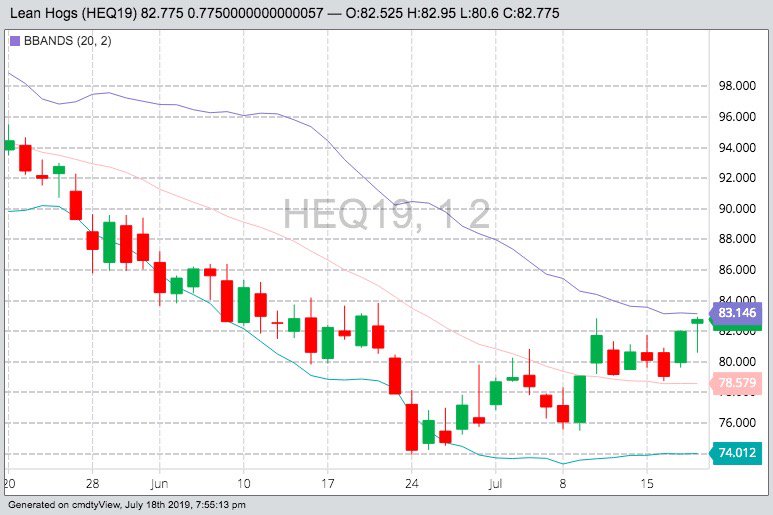Chicago | Reuters — Chicago Mercantile Exchange (CME) lean hog futures reached their highest prices in about a month on Thursday on expectations of bigger pork imports by China, traders said.
A recent rise in Chinese pork prices, linked to an outbreak of a fatal hog disease in Asia, is fueling expectations that buyers there will increase imports later this year and in 2020, traders said.
China, the world’s biggest hog producer and pork consumer, has reported more than 140 outbreaks of the African swine fever disease, for which there is no vaccine or cure, since the first case last August.
Read Also

U.S. grains: CBOT soybeans, corn, wheat fall in USDA data aftermath
Chicago grains took a dive on Friday, following a closely watched U.S. government crop report and the release of export data that could provide clues into Chinese buying.
“The second half of 2019, China is going to be short pork, even more than they have been,” said Jim Gerlach, president of broker A/C Trading in Indiana. “The market has been running up on that sentiment.”
CME August lean hog futures closed up 0.775 cent at 82.775 cents/lb., while October hogs finished down 0.925 cent at 76.9 cents (all figures US$). Both traded to their highest price since June 20.
The U.S. Department of Agriculture (USDA), in a weekly report, said net export sales of U.S. pork last week were 30,100 tonnes for 2019, up 43 per cent from the prior four-week average. There were no new sales to China, but the agency said 9,900 tonnes were shipped to China.
Increased purchases of U.S. pork by China would help reduce American meat inventories that swelled as farmers expanded herd sizes and meat packers slaughtered more animals.
Large cattle supplies and declining beef prices weighed on cattle futures, traders said.
CME August live cattle futures closed down 0.725 cent at 107.4 cents/lb. CME October cattle slid 0.5 cent to 108.25 cents/lb.
CME August feeder cattle futures stumbled 1.15 cents to 139.425 cents/lb. September feeders declined 1.3 cents to 139.475 cents/lb.
On Friday, traders will assess a monthly Cattle on Feed report due out from USDA at 2 p.m. CT.
— Tom Polansek reports on agriculture and ag commodities for Reuters from Chicago.













